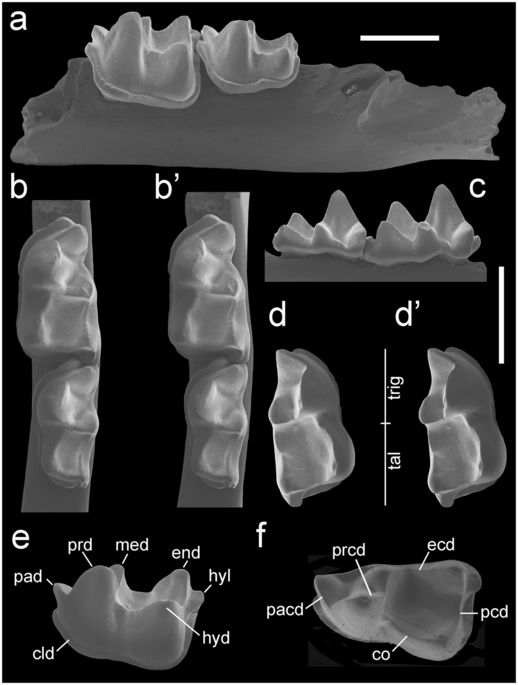Scientists have discovered fossils of a huge bat located close to a historic mining town, St. Bathans in New Zealand’s South Island. This, massive burrowing bat is estimated to have lived between 16- and 19 million years ago. The bat weighed 0.8 pounds. Its teeth and bones were three times bigger than those of bats we know today. Behind the discovery of the bat is an international team of researchers who published their findings in Scientific Reports.
Extinct massive burrowing bat
The bat could fly despite having four legs. It roamed on the ground, searching for food beneath leaves and tree branches. It most likely living in the forests and ferns, close to the prehistoric Lake Manuherika, which was once part of the Maniototo region on the South Island, researchers wrote in the paper.
The scientific name of the bat is Vulcanops jennyworthyae and it is the largest known species of all burrowing bats. It was named after Jenny Worthy, who is the team member who discovered the fossils. Vulcan is derived from a mythological Roman god of fire and volcanos, as well as referencing a historic hotel in St. Bathans close to the site where researchers discovered the fossil.
Modern cousins of this bat which has only been discovered in New Zealand, are located in South America.
“Burrowing bats are more closely related to bats living in South America than to others in the southwest Pacific,” Sue Hand, the study’s lead author and paleontologist of University of New South Wales in Sydney, was quoted in a statement. The massive burrowing bat is a part of “a bat superfamily that once spanned the southern landmasses of Australia, New Zealand, South America, and Possibly Antarctica.”
Separated from its relatives
Around 50 million years ago, instead of the continents as we know today, four of them were possibly connected in a huge, southern continent called Gondwana. At that time Antarctica was green and without ice, as temperatures were almost 54 degrees Fahrenheit higher. When the land split up, the climate changed and cooled down, as ice sheets covered Antarctica. That way the discovered burrowing bats were split from their relatives in South America, researchers wrote.
“The fossils of this spectacular bat and several others in the St. Bathans fauna show that the prehistoric aviary that was New Zealand also included a surprising diversity of furry critters alongside the birds,” Trevor Worthy, co-author and paleontologist of Flinders University, said in a statement.
Teeth revealed their diet
The extinct, massive burrowing bat used to eat insects, spiders, and wētā, which is a common name for a group of 70 insect species which live in New Zealand. Based on the size of its teeth, researchers concluded that the bat ate plants and also small vertebrates, which is a similar diet to their distant relatives from South America. Nevertheless, today’s Australasian bats don’t enjoy the same diet.
Thanks to the changing climate over millions of years, there’s a decline in New Zealand’s bat diversity. Also, now that scientists discovered the fossilized burrowing bat, there is much more information regarding the supercontinent Gondwana.












